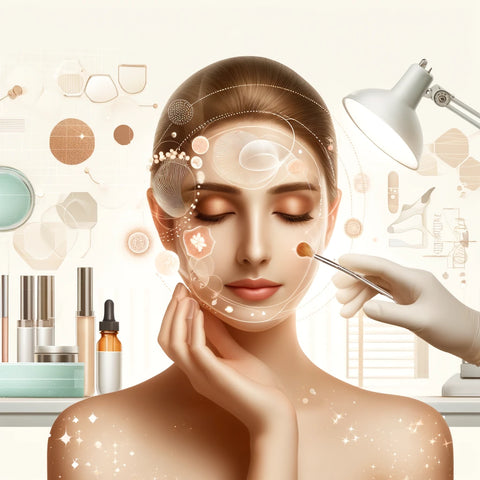Brown Pigmentation on Face
What are the Brown Pigmentation that you find on your face? Melasma is a skin condition that denotes by patches of brown spots on the skin. While it is not harmful and doesn't require treatment, many seek ways to lessen its looks for skin surface reasons. Keeping the skin safe from the sun is crucial in both reducing and can prevent melasma.
How Do You Treat Brown Pigmentation On The Face?
Topical cures can effectively treat Melasma and other forms of facial Hyperpigmentation. Hydroquinone is the standard, known for its value in easing dark spots. Retinoids, Azelaic Acid, Kojic Acid, Tranexamic Acid, Cysteamine, and certain beauty products also helps. These treatments work by reducing melanin production, that also fades Hyperpigmentation.
Why Am I Getting Brown Pigmentation On My Face?
Brown spots on the face are the main causes of the over-production of melanin, a pigment behind skin color. This excessive production triggers various factors such as sun exposure, hormonal changes, and genetic weakness. Knowing these triggers is key to both treatment and prevention.
What Causes Your Face To Turn Brown?
The dimmed skin areas can result from increased melanin production or hyper active Melanocytes. Factors like sun exposure and hormonal influences can cause these cells to become more active, leading to pigmentation. It's crucial to identify this from a natural suntan, as the key causes and treatments may vary.
Does Brown Pigmentation On My Face Go Away?
Hyperpigmentation, like melasma, typically fades over time. Spots a few shades darker than your natural skin tone may take 6 to 12 months to lighten. However, deeper pigmentation can take years to resolve. Patience and consistent treatment are key.
What Is The Fastest Way To Cure Melasma?
The fastest results for treating melasma are often notable with professional dermatological treatments. These may include topical medications and chemical peels. Which are also to speed up the fading of dark patches and improve overall skin tone.
Conclusion
While brown pigmentation on the face, such as melasma, can be a lasting skin concern, various effective treatments are available. It's also crucial to remember that every skin type is different. Thus, a consultation with a dermatologist is wise to choose the most suitable treatment. Prevention, mainly through thorough sun protection, remains a key step in managing melasma.
Common Questions Asked
Yes, sun exposure is a significant factor in the development of melasma. Ultraviolet (UV) light from the sun stimulates the melanocytes, leading to increased melanin production and the darkening of the skin. Using a broad-spectrum sunscreen with an SPF of 30 or higher and wearing protective clothing can help manage and prevent melasma.
Absolutely. Lifestyle changes can play a role in managing melasma. This includes avoiding sun exposure, using sun protection, and possibly adjusting certain medications or skincare products that may trigger pigmentation changes.
It's also helpful to use gentle skincare products to avoid irritating the skin, which can worsen pigmentation.
Home remedies, such as aloe vera, turmeric masks, or green tea, may provide some benefits due to their anti-inflammatory properties. However, they are generally less effective compared to medical treatments.
It's important to consult with a dermatologist before trying home remedies, as some ingredients might irritate the skin or cause allergic reactions.
Yes, melasma can occur in men, but it is much less common. Only about 10% of melasma cases are in men. The condition is more prevalent in women, particularly during pregnancy or when using hormonal contraception, due to the hormonal influences that can trigger melasma.






